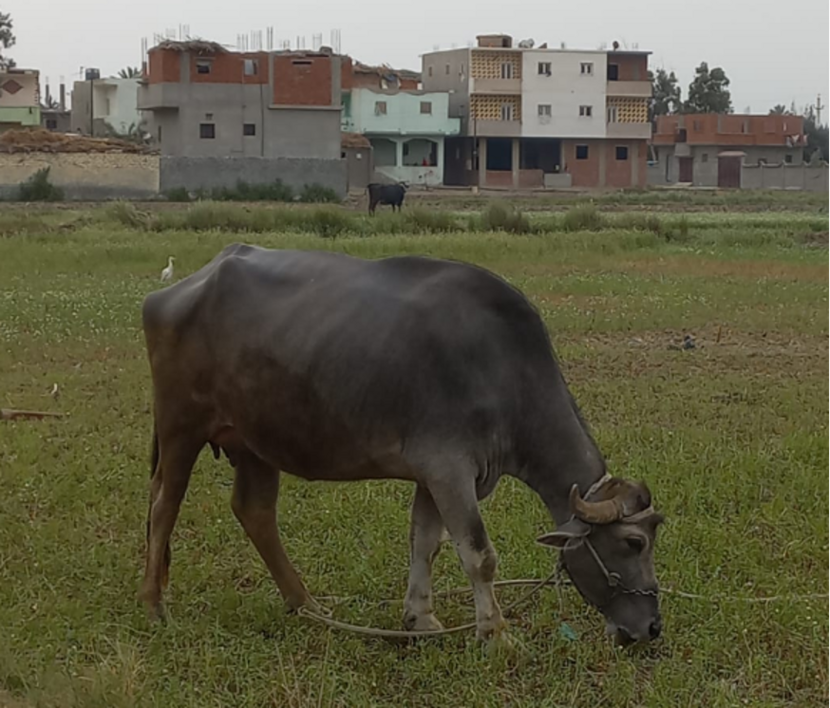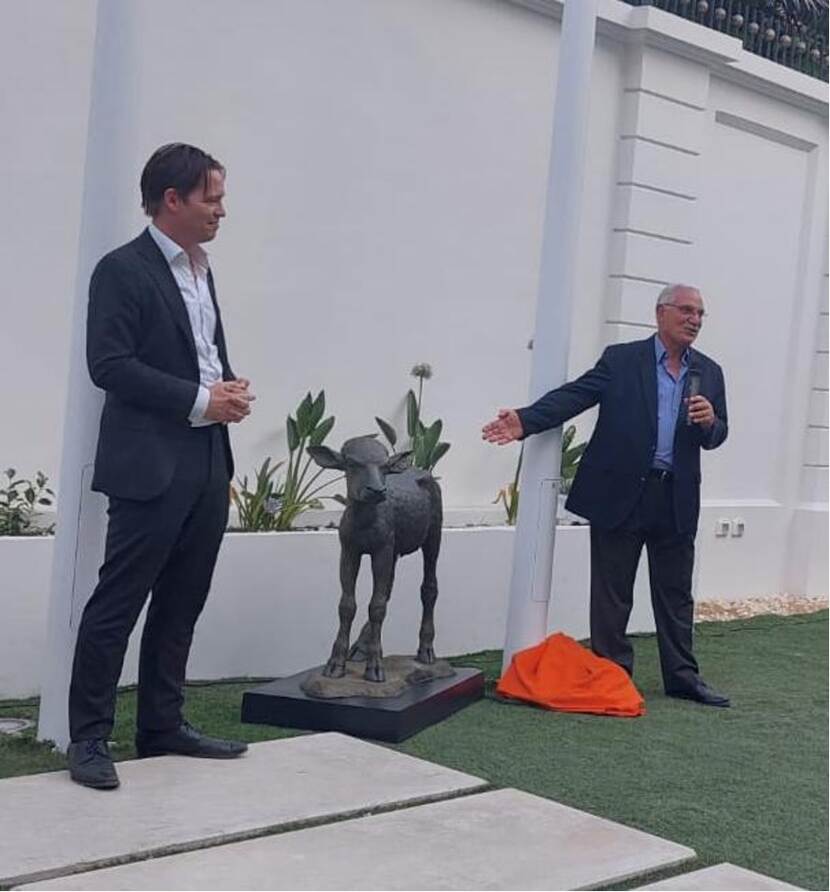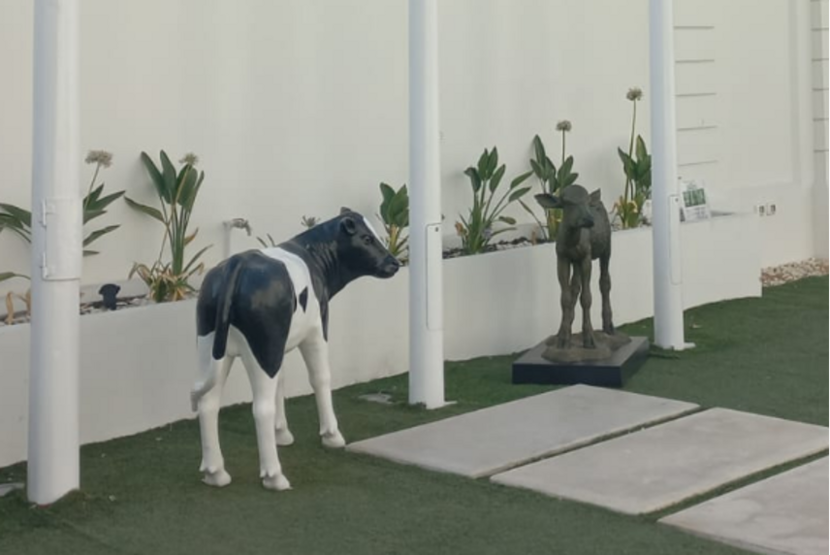The Egyptian buffalo, bred for climate resilience
Buffaloes have proven to be a perfect fit for the Egyptian climate and agro-ecological conditions. Their robustness not only helps farmers withstand the impacts of climate change but also economic shocks. However, despite their qualities, the bulk dairy market has yet to recognize the premium value of their flavorful meat and dairy products. Former Agricultural Counsellor Melle Leenstra believes that now is the time to change this narrative and truly appreciate the Egyptian buffalo, from farm to fork.

For many generations, agricultural counsellors have been enthusiastic about promoting the export of Friesian genetics for optimal dairy production. As a hybrid Friesian myself, hailing from the province of Friesland, this has always filled me with regional pride. However, given the current global focus on climate change, loss of biodiversity, and other sustainability concerns within the dairy sector, we must ask ourselves: is the black and white Holstein-Friesian truly the most suitable breed for dairy production worldwide? Moreover, what type of dairy or livestock system will be future-proof and support the transition towards sustainable and healthy diets?
Sustainable farming systems
Modern farming, in general, is not future-proof. In the Netherlands, we have made significant progress in increasing productivity and cost-efficiency in our specialized farming systems. However, we have also exceeded our planetary boundaries, leading to growing social and political opposition to this model of farming. Nitrate emissions and the monocropping of feed, relying on intensive chemical inputs, pose a threat to biodiversity. Additionally, direct emissions of methane by cows and CO2 emissions along the value chain contribute to climate change. In response to these challenges, dairy farmers in the Netherlands have been striving to make their farming systems more sustainable. The Dutch dairy sector claims to have achieved the lowest greenhouse gas emissions per glass of milk in the world.
Similar sustainability challenges
In Egypt, dairy farming faces similar sustainability challenges and vulnerability to climate change and volatile international markets. Firstly, in this water-scarce country, cows have a substantial water footprint, considering both their drinking needs and the water required for their food. Modern dairy farms often operate in newly reclaimed lands and rely on nonrenewable groundwater, depleting the local wells or causing salinity issues. Another challenge is the temperature. The highly productive Holstein-Friesian breed thrives in lower temperatures (below 20°C), which means that cows either produce less milk due to overheating or a considerable amount of energy is expended on ventilation and cooling systems. These cows are also more susceptible to diseases and have specific dietary requirements, relying on high-quality silage and power feed such as soy and maize. Given the current economic climate in Egypt, dairy farmers are facing significant challenges. Much of the soy and maize used for cow feed is imported, and the shortage of foreign currency has resulted in low feed availability, driving up prices.
Arabic era
Considering the context of transitioning to more sustainable food systems, as well as the specific challenges faced in Egypt, it might be worthwhile to give more attention to the buffalo breed. Water buffaloes have been present in Egypt since at least the early Arabic era, and there are even stories suggesting that Cleopatra gifted buffaloes to her lover Mark Antony, thereby bringing the origin of buffalo mozzarella to Italy. Traditionally, Egyptian cheeses like Domiaty and Mish, as well as butter and ghee, have been made using buffalo milk.
Viable value chain
While buffaloes may produce less milk per cow compared to Holstein-Friesians, they can play a crucial role in climate-resilient farming systems. They are less demanding eaters, more heat-tolerant, and exhibit greater resilience to diseases. In short, they are better suited than Friesian cows to endure the harsh Egyptian climate. In a sustainable mixed farming system such as the bio-dynamic model promoted by Sekem, organic manure becomes the foundation for compost, enhancing soil fertility. In this case, manure becomes the primary product of livestock, with milk and meat serving as valuable by-products.
Buffalo dairy and meat are not only resilient but also known for their exceptional taste, making them highly appealing to discerning upmarket customers who value authenticity and sustainability. These customers can be found among the globally oriented elite middle class residing in Egypt or visiting as tourists. The key lies in establishing a viable value chain and implementing effective marketing strategies. By doing so, an additional premium can be generated for sustainability and authenticity, which, when combined with lower feed and medication costs, can offset the lower production of buffaloes. The fact that resilience comes at a price is evidenced by anecdotal data showing that, in the current economic context, buffalo heifers command higher prices than young dairy cows. Some innovative farmers in the Netherlands have already transitioned to buffalo farming to reap these premiums and bypass the regulatory hurdles of the conventional dairy sector.

Buffalo calf sculpture
As the former Agricultural Counsellor in Cairo, I have personally been captivated by the flavors of buffalo products, their aesthetic appeal, and the opportunities they present for climate-smart buffalo businesses. I have encouraged my friends both in the farming sector (such as Osiris Dairy and Diar Mariam) and in the culinary sector (like RDNA and Zööba) to seize these opportunities. To commemorate these opportunities and celebrate the Egyptian-Dutch cooperation in agriculture with the Embassy and the Netherlands Agricultural Network, I have commissioned artists Dhalia Aly and Ali Nabil to create a buffalo calf sculpture for the embassy garden. This buffalo calf will stand as a companion to the Friesian bull calf in the embassy garden for years.
